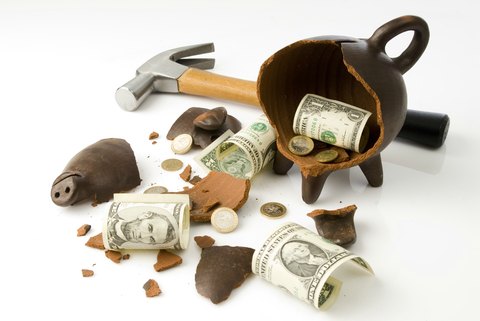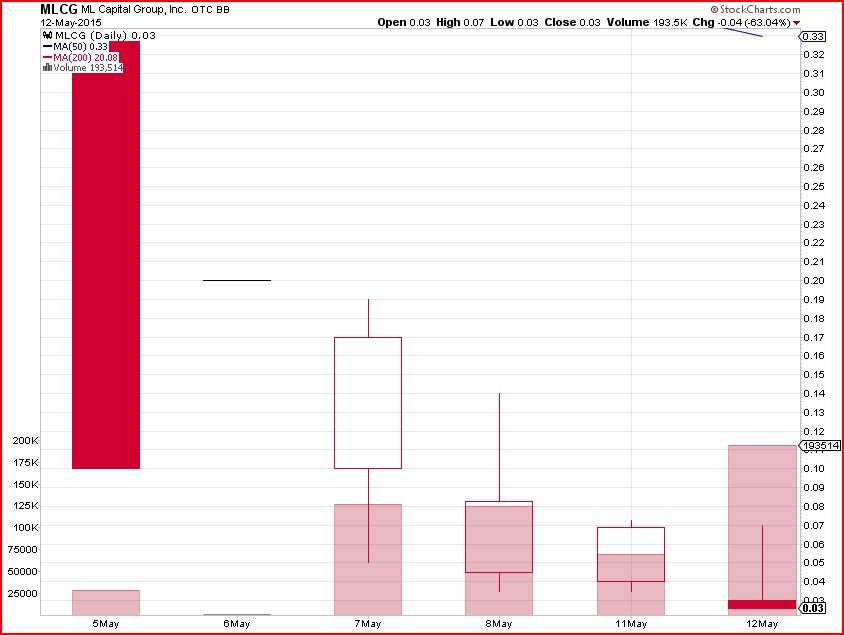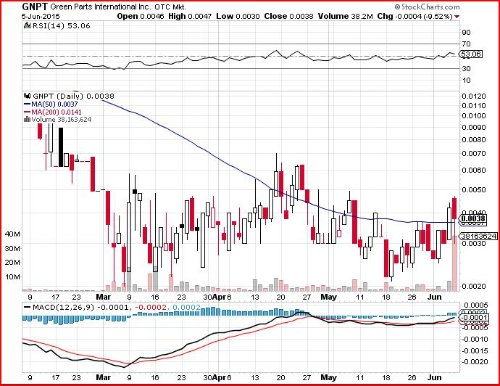Penny Stock Risks
vs. Rewards

There are many penny stock risks that you'll encounter on a nearly daily basis. Eventually they'll break the bank of the uneducated trader, but if you know what to look for and how to maneuver, then let me tell ya'...Them hills have gold!
In order to be a successful OTC trader you'll have to be able to spot penny stock risks before you get deep into a trade. The most obvious and the ultimate risk every investor faces, no matter what the investment is, is that your account goes to zero. Small losses are unavoidable, but a total loss is unacceptable!
Some simple, but essential words of advice - Don't overextend yourself in any one stock, quickly limit your losses when things break down and take profits frequently.
Let's work our way from some of the most common all the way down to the most devastating of penny stock risks!
"Be greedy when others are fearful
and be fearful when others are greedy!"
Warren Buffett,
Billionaire Investor
Most Common Penny Stock Risks
FYI - Before we get started, I want to point out a risk that not many might think of...The "pattern day trader" rule. If you place more than 3 "day trades" in a 5 trading day period and have an account balance less than $25,000 (securities and/or cash combined), then you will be flagged as a pattern day trader if you have a margin account. This can get your account restricted for a 90 day period.
If you have a cash account the pattern day trader rule does not apply, but you have to wait for your funds to clear after each trade (3 days).
Pump and Dumps
These are not your simple stock promotions (covered in a future lesson), but I'm referring to the very elaborately devised plan by usually a large promoter, some phony executives (if you can call them that), crooked attorney's, crooked CPA's and off shore accounts.
Basically, the company creates some bogus marketing materials, comes up with an impossible multi-million or billion dollar business plan and works with an "in the know" promoter to pump a stock and its fake future potential to dump millions and millions of shares into the public market...These are the ones that you occasionally here the SEC actually take action on.
Leading up to a pump and dump there is oftentimes a reverse merger...
Reverse Merger (RM)
A reverse merger is when a private company merges into a public shell. In the case of the scam mentioned above, this happens sometime not too long before the pump...The dream begins!
FYI - Don't be scared of reverse mergers just because of this, not all reverse mergers turn into pump and dumps and I wouldn't normally consider them to be one of these penny stock risks (only when combined with other events). They are often very profitable trading opportunities.
Forward Split
A forward split is usually perceived as a positive when a Nasdaq or NYSE company announces one, but on the OTC it's typically only done to increase the number of shares the insiders have, while reducing their cost per share, to eventually dump on unsuspecting buyers at the highest price possible.
It works like this: If a company has an outstanding share count of 1,000,000 the company will announce let's say a 20 for 1 split, then the share count goes to 20,000,000 giving these insiders 20x more shares then they had!
Once the pump portion begins, the promoter sends out hundreds, thousands or even hundreds of thousands of emails to their mailing list, sometimes following this up with hard mailers and even with the use of boiler rooms.
The action is hot and heavy while buyers want to get a piece of the next big thing, for pennies on the dollar, and the insiders are laughing all the way to the bank and they sell off millions of shares for a fake company that has absolutely zero chance of having a successful future!!!
This was something Awesome Penny Stocks was famous for and it is rumored they made hundreds of millions of dollars with similar setups.
Can Pump and Dumps Be Profitable for Traders?
Absolutely, but I wouldn't recommend them for beginners as they can move in both directions very fast...They might move up from .03 to .30 in a matter of days, but plummet to .005 in a matter of hours!
The reverse of the pump and dump and another one of the penny stock risks to watch for is the...
Short and Distort
I won't go into all the details about short selling as it's beyond the scope of this guide, but money can be made when stocks go up and when they go down, depending on how a trader plays it.
In order for the short and distort to work a trader "short sells" a stock and then somebody writes a hit piece (an article bashing or exposing the company) on a popular website along with raising fears on public message boards. As the stock goes down they profit and eventually close their position with a hefty profit.
Message Board Pumpers and Bashers
An extremely common form of manipulation is to work the message boards to pump and or bash an individual company and the inherent penny stock risks. The largest investment and stock message board out there is InvestorsHub. When using their site, I'd say to block out everything that doesn't have a link to an official website offering legitimate research about the company.
If you are long on the stock though, don't get blinded by all the chatter where the pumpers are trying to discount the "bashers." If a so called basher produces information, that can be backed up, and it's bad news for the stock it would behoove you to move forward with caution.
Remember, the large, very large majority of OTC companies fail! So as annoying as the bashers are, they are usually right, it's simply a law of averages.
SEC Halts & OTC Caveat Emptor
When the craziness ensues around all this fake hype it eventually gets the attention of the authorities...so to speak.
The greatest penny stock risks in these situations is an SEC Halt! When that happens the stock can be shut down, immediately, and trading may not resume for a number of days. Usually when it resumes, it tanks. Fast! Here is the SEC take on Penny Stock Risks and Halts
The OTC really doesn't have much authority to do anything directly to stop trading, but when they see suspicious activity taking place they can slap the Caveat Emptor (cross and bones) symbol on the stock and discontinue displaying quotes for the stock.
Saavy traders will see this and typically, immediately dump their shares. This in addition, to the insiders dumping shares and oh boy! Penny stocks can go down really, really fast!
Think I'm kidding? Look at this stock go from about .33 to .03 in five days. Look at that first day...Ouch!

Penny stocks can fall for a 60, 70, 80% loss
in a matter of seconds...
Scary!
Reverse Splits
These rarely work out good and they're just the opposite of a forward split. The outstanding share count goes down and the price goes up an equivalent amount keeping an investors account balance the same...That is until there is the typical sell off that follows.
There is a time when a reverse split is good, but it is extremely rare on the OTC. This is when a company does a legitimate reverse split in order to raise their share price so they can meet minimum listing requirements for a listing on a major exchange, i.e. an uplist.
If the company has no or limited revenues and/or not even a business currently working, then it's simply to "undo" the dilution that had been done prior. Simply a rinse, wash, repeat process!
Toxic Financing and Dilution
Both the scammers and even the few legitimate companies on the OTC are looking to raise money. We've seen above how selling massive amounts of shares can dilute the value of a stock and cause it to tank when the scammers are running the business, but this can happen to the company that is actually trying to build something legit too.
There is a reason that legitimate companies exist on the OTC and that is because they have no money to take action on their revolutionary business plan. However, the best laid plans only go so far on IOU's!
The way many of these companies have to raise money, because their shares are not registered to sell publicly, on the OTC is to find financiers that offer a form of "toxic financing."
In return for the company receiving funding to keep the doors open, they promise to continue to issue shares to this financier, that they sell on the open market, until they've been repaid with substantial interest (profit).
Toxic Financing leads to what many traders call a death spiral! Why? Simply because that's what the stock does once the selling begins and never seems to end!
Liquidity Trap
Lightly traded penny stocks are like getting stuck in a bear trap. When you want out you can't do it. When you try really hard it just hurts more and more (i.e. price drops more and more). Be sure to not buy into a stock for more than 5% of the average 30 day volume or else you might fall prey to this all too common of penny stock risks!
The Most Devastating Risks for Penny Stock Traders
These are two penny stock risks that are easily avoided, but most traders seem to fall into one of these traps on occasion.
Time and Greed are not on your side when it comes to trading OTC stocks. The longer a penny stock stays in the air the better look everyone gets a look at its rear end...Eventually everyone realizes it stinks!
Never, ever marry a penny stock! You simply want to date them. If you fall in love it's practically guaranteed you'll get your heart broken .. Over and over!
That said, there is the very rare occasion where you might give a stock more time, but the longer you own it the deeper you should be looking. You should stay in consistent contact with management and have done very thorough research on the company and management. Some of these companies do make it big, really big, but it is extremely rare.
To sum these up:
- Don't hang around for that "much bigger" move to come. The more time you spend in an OTC stock the better chance you will lose. At a minimum, take some profit off the table when it is there to take. Or better yet, get your initial investment out and ride the rest of the shares with no risk, called free shares.
- Don't get emotionally involved with these stocks. They are simply investment vehicles for short term profits. At the first sign of trouble for a stock you really like, get out! Trust me, there is another one right around the corner.
Ultimately, the individual trader themselves and the greed that keeps them in a stock far too long are, in my opinion, the greatest of all penny stock risks.
If you don't keep your emotions in check and you expect every stock you buy to make you a millionaire, then you're going to have to have a really good day job to keep funding your account! Mark my words and caveat emptor!!!
Now that you've got a solid understanding of penny stock risks, let's learn a about the stock trading resources and software that you'll you use to spot them on a daily basis.
Table of Contents
Lesson 1:
What is a Penny Stock
Lesson 2:
Fundamentals
Lesson 3:
SEC Forms
Lesson 4:
Best Brokers
Lesson 5:
Risk vs Reward
Lesson 6:
Tools of the Trade
Lesson 7:
Stock Promoters
Lesson 8:
Trading Strategy
Lesson 9:
How to Find Stocks
Lesson 10:
How to Buy Stocks




